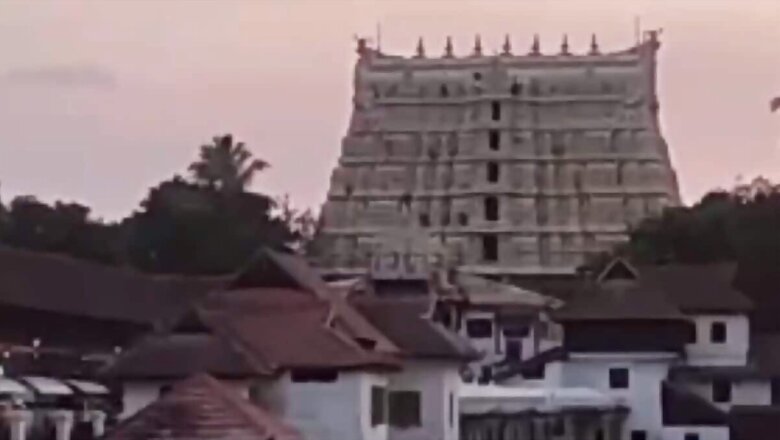
views
When one hears about Anantha Padmanabhaswamy Temple, the first thing that comes to mind is the beautiful gopuram and the rectangular Padmatheertham pond. The pond has a natural spring and is considered as sacred as the temple by devotees from different parts of the world.
In the 14th-century Manipravalam poem, Padmatheertham is mentioned as Anantha Theertham. Historian M. G. Sasibhooshan says, “There was a golden lotus in the middle of the pond. Whenever the water level rises, the lotus also gets raised. The name Padmatheertham is derived from the golden lotus.”
A well was dug in the middle of the pond to avoid water stagnation. From this well, freshwater flows into the pond and ensures circulation. During the time of Anizham Thirunal Marthanda Varma, the pond was expanded by constructing stone steps. The natural drainage system in the pond ensured that the fresh water from the Kochar flowed towards Padmatheertham while the used water flowed towards Pathrakulam (now Theerthapada Mandapam) and finally merged with the sea at Shanghumugham. Later, pipelines were introduced to channel the water, which resulted in the system getting clogged at several places.
“There are 12 ponds surrounding the temple. Ananthapura Varnanam – a poem from Manipravalam – mentions the existence of these ponds along with their names. The abhisheka jalam (holy water) of the temple flows through an underground passage to the well in the centre,” says historian Neduvattam Gopalakrishnan.
“Near the Padmanabhaswamy Temple, there is a Trimurti temple called Kandhaloor Shala. It was an ancient educational institution where astrology, grammar and Vedas were taught. The inscriptions dating back to the 10th century describe the existence of the Gurukul.”
Padmatheertham is especially significant during Murajapam, a custom performed once in six years at the temple. As part of rituals, scholars stand at the Padmatheertham and chant ancient hymns in the Vedas.
The Padmanabhaswamy Temple is a Hindu temple dedicated to Lord Vishnu in Thiruvananthapuram, the capital of Kerala. It is one of the 108 Divya Desams, the sacred abodes of Vishnu in the Sri Vaishnava tradition. It is widely considered to be the richest Hindu temple in the world.



















Comments
0 comment